Much as I love the Northern Classics, it’s hard to see their various locations as glamorous or attractive in their own right. The rusting, post-industrial wasteland of Liege; the rainy, cowshit-spattered hills of Flanders, and Roubaix - a city where you don’t want to stop at the traffic lights for fear someone will mug you for your bike. Several of the locations of these races give new meaning to the term ‘crap town’.
So when I found out about the Gran Fondo Michele Bartoli, I was immediately intrigued. A race in Italy that attempts to recreate the Northern classics, but in the Tuscan Countryside - where the fires smell of cedar wood, rather than burning car tyres? And where the food offering consists of something other than kebabs? I’ll have some of that.
I first learned about this Gran Fondo from reading David Walsh’s Seven Deadly Sins. So at least some good came from plodding through several chapters of some sanctimonious hack repeatedly pointing out, ‘There, see, I told you so’.
Depressingly, a google search revealed not much more than a dead link to the race website, and some lively discussions of old editions on some Italian chatrooms (is there ever not lively discussion on Italian chatrooms?). At this point, a sensible person would give up and go and find something useful to do. But I’m not sensible and I don’t have anything useful to do, so I persisted and eventually dug up a (very vague) description of the route (in Italian), a climb profile card, and some very blurry maps of the course.
The mystery surrounding the race spurred me on - why did it stop in 2011? What is the course really like? Does it end in a town as grim as Roubaix? Is there another town as grim as Roubaix? It sparked my sense of adventure. These days, any pratt with a gps, full pro kit and a plastic Pinarello can find his way to, say, Mont Ventoux, and pedal his way to the top, after spending 6 months practising the route on a training simulator. Where’s the mystery in that? Where’s the excitement? Where’s the chance of getting hopelessly lost and having to do a poo in the woods in a strange country? Isn’t that what cycling’s all about?
Thanks to google maps, I was able to plot out something roughly resembling the course, and even to find the main climbs - including the course’s answers to the Flemish cobbles: the Mur of St Gennaro and the Sterrata St Martino.
A trip to L’Eroica provided a reason to be in Italy, and I found a cheap and cheerless B&B in Pescia, not far from the start town of Montecarlo. I was even lucky with the weather. Rather than last year’s October Tuscan deluge, this year was pleasantly warm and dry. Better weather than we’d had all summer in Belgium - although not exactly classic ‘Flandrien’ conditions.
I started the ride at 9:00 in the morning, riding up to Montecarlo, which is a charming little hill town about 30km from Lucca. I was slightly disconcerted by the B&B owner’s reaction when I told her what I was doing - ‘You ride from Lucca? From here? Why?’ But I chose to ignore this.
The course dips down from Montecarlo before climbing back up a short hill called the Poggio Baldino. Nothing too challenging, just enough to warm up the legs. However, I did realise at the top of the Poggio that I’d forgotten my camera. So no photos. Sorry. Instead, I’ve cobbled together some pictures from the internet, to relieve the monotony of my drivelling.
After circling round Montecarlo, there followed a long, flat run in to Lucca. A reasonable imitation of the run in from Brugge in the Tour of Flanders, I suppose - only not as windy. Lucca is a lovely town, an old walled city that’s (coincidentally) twinned with my home town in England. I don’t know how they managed that, because my home town’s a dump. The bike shop ‘Poli’ is worth seeing. From Lucca, I followed a tree lined riverside bike track. A bit of unpaved strada Bianca - very pleasant indeed. The track brought me easily to the first real climb of the day - the Salita di Chiatri up to Stabbiano. This climb reminded me of the Col du Rosier from Liege-Bastogne-Liege - at 5km, not a ‘real' col, but just long and steep enough to be a challenge. The 5% gradient was not eye-wateringly tough, but a very short section of cobbles at the top gave it a bit of extra bite. Stabbiano is a pretty village, and the descent down to the town of Massarosa was exhilarating: a steep, narrow road, with occasional glimpsed views of the Italian coast and the viaduct over Massarosa through the heavy woods.
The outskirts of Massarosa were quite attractive, with lazy little squares and narrow streets. The centre of the town was nothing special, and was followed by my least favourite type of climb: the 4km pull of the Monte Pitoro. This was a rather dull stretch of asphalt, dusty, busy with cars, and fully open to the sun, climbed mostly with one’s back to the view of the coast. Fortunately, the work was rewarded with a long, smooth and wide descent to the next set of climbs.
Reaching San Martino in Freddana led to some of the toughest climbs of the day - a series of ascents up to and past the towns of Fiano and Pescaglia. The description I found compares these to the Cote de la Redoute, but I found that a bit overstated (and thank heaven, really). There were steep sections of 10-16%, but nothing so extreme as the hardest climbs in Liege-Batogne-Liege. However, the landscape here was gorgeous: steep, heavily wooded hills, scattered with pretty little Tuscan villages, and the smell of cedar wood in the air. The climb felt almost like one continous col - I think the distance was about 12km. It was certainly difficult enough to feel satisfying.
Once gain, the toil of climbing was rewarded with a spectacular descent, this time down a narrow hill road beside a rocky, dried up riverbed, with crags and cliffs looming up on either side. This part of the ride reminded me more of the Ardeche in France than Tuscany, but nothing wrong with that.
The end of the climb was a bit of a brutal shock, bringing me onto a thundering Strada Provinciale back towards Lucca, and leading me to a pointless and annoying detour into an industrial estate. The Strada Provinciale denomination is confusing: it seems to indicate anything from a smallish country road (and even some sections of strade bianche in L’Eroica) to a highway not much quieter than a motorway. There was a wide hard shoulder, though, which was being well used by cyclists. I missed a turn off to a quieter parallel road to the SP, and had to cross the ancient Devil’s Bridge on foot, before coming to another bridge back over towards another climb up to a town called Aquilea. Frustratingly, I was unable to find the turn off for this climb, and didn’t fancy spending any more time on the SP, so I gave up and headed on to the next two towns, Marlia and Matraia. The area round Marlia is similar to the maze of roads that link the important climbs of the Tour of Flanders: narrow and confusing. A couple of wrong turns and dead ends were frustrating, but I eventually got back on to my route and was able to find the pair of climbs up to Matraia. At this point, the landscape was much more typically Tuscan - more open hills and little villages, with garden bonfires smoking into the afternoon sky.
Up to this point, I was feeling rather smug with my choice of food supplies - not much more than a very big bag of raisins. Healthy, high sugar, low fat. Very sensible, I congratulated myself. However, by the time I got to Matraia, I could feel the man with the hammer knocking. Matraia is a bit of a one-horse (or even one-donkey) town, but at least it had a shop that was open. My indecisiveness and inability to choose between the range of almost identical looking cakes and biscuits in the shop was confirmation of my low blood sugar levels, as was my profoundly idiotic decision to sustain myself with a massive bag of crisps. I can only explain the logic behind this with the feeble argument that I needed to replace lost salt from sweating. The passing Italians who looked on in disgust as I squatted Gollum-like on the ground and crammed greasy potato chips into my mouth were certainly not impressed with my menu. I did actually feel better for a feed - briefly at least, until a bout of queasiness set in while a combination of crisps and raisins did dubious battle in my digestive tract. Bleeugh.
At this point, though, the only way back home was to follow my route, so I just had to hope I wouldn’t have to relive Greg Lemond’s intestinal adventures, as described with such gleeful graphicness in ‘Slaying the Badger’.
Again, the Tuscan countryside provided some welcome distraction from all this digestive turmoil, with a gentle descent through some more picturesque Tuscan villages on the way to the biggest target of the day: the Wall of San Gennaro. I am not exaggerating when I say that this thing is really quite mental. I don’t think anyone would even think to try to ride a bike up there, if the organisers of the Gran Fondo hadn’t actively been seeking out an equivalent to the Muur of Geraadsbergen or the Koppenberg.
Although the cobbled section is quite short, it is both very twisty and very, very rough. Unlike the regularly shaped (if unevenly laid) Flemish setts, the cobbles here vary from little pebbles to proper rocks. Oh, and with a couple of pieces like chunks of kerbstone thrown in. There is a stretch of smooth paving in the first part of the climb, but I wasn’t even able to use that, since someone had parked one of those crappy Piaggio vans in the middle of it. And anyway, riding in the drainage ditches on a cobbled climb is like having a shower with your wellies on. If you see what I mean. You can get quite a good impression from the videos of the climb in this article:
http://www.gazzetta.it/Ciclismo/31-10-2 ... 6792.shtml
It really was a battle to do this climb - harder than my favourite Tour of Flanders climb, the Paterberg. I nearly came a cropper on a piece like a broken kerbstone lying perpendicular across the road, and had to put a hand out to steady myself on the narrowest piece at the end, which was a gap between two houses barely wide enough for a bike to pass. However, I felt a certain sense of triumph at the end, having got up first go, without putting a foot down. Or so I thought: after the last narrow section, there was a stretch of asphalt, but then the cobbles continued off to the left, even further, and even steeper uphill towards a little hotel at the top of the hill. Bugger! There was more of it! I hesitated here: this last section doesn’t appear in the videos above, and it honestly looked so steep and rough I wasn’t sure it was meant to be part of the climb, but I decided to have a go. And failed spectacularly. I got about half way up, and saw that the already rough surface degenerated further into a mass of moss, grass and lumps of cobblestone dumped into a crater. My legs and my head both gave out, I collapsed against the wall beside me, and got off to finish the climb on foot. So I don’t really know if I can claim that I really did the climb or not (not to mention that cheeky hand on the wall). On the one hand, it was there at the top of the climb, and was an obvious choice to include, but on the other hand, the last section is not in the films, and the surface was so bad I don’t know if it would’ve been included in a race. Maybe I’ll have to go back next year for another try, just to be sure.
In any case, I was nearly at the end of the 150km-odd route, with just a section called the ‘Sterrata San Martino’ left as a final challenge. This turned out to be more like some of the rougher sections of L’Eroica’s Strade Bianchi than the cobbles of the Carrefour L’Arbre, and probably a good thing too - it was getting quite dark at this point, and I didn’t much fancy real Paris-Roubaix style cobbles in the gloaming. I tottered around on this last section for a while, just enough to equal the 1.5km mentioned in the route descriptions, and headed back the last few km to my B&B in Pescia. I felt pleased to have got round most of the route (except the Aquilea climb) and to have found the most interesting climbs. Unfortunately, the crisps vs raisins battle in my stomach very much kicked off again when I so much as looked at the ready-made ribollita I’d left in the fridge for my dinner. This did not bode so well for L’Eroica, which I was planning to do the day after next…
All in all, this route is really fantastic - challenging enough and with varied scenery, and with the added interest of the cobbled sections to make it more than just a jaunt in the Tuscan hills. I don’t know what happened to the organised version of the event - it’s a shame it seems to have disappeared from the calendar, but at the same time, the mystery of it all made the whole thing more intriguing. If anyone wants a copy of the road book I made to take along, just PM me. Who knows, maybe we can have a go next year?
So when I found out about the Gran Fondo Michele Bartoli, I was immediately intrigued. A race in Italy that attempts to recreate the Northern classics, but in the Tuscan Countryside - where the fires smell of cedar wood, rather than burning car tyres? And where the food offering consists of something other than kebabs? I’ll have some of that.
I first learned about this Gran Fondo from reading David Walsh’s Seven Deadly Sins. So at least some good came from plodding through several chapters of some sanctimonious hack repeatedly pointing out, ‘There, see, I told you so’.
Depressingly, a google search revealed not much more than a dead link to the race website, and some lively discussions of old editions on some Italian chatrooms (is there ever not lively discussion on Italian chatrooms?). At this point, a sensible person would give up and go and find something useful to do. But I’m not sensible and I don’t have anything useful to do, so I persisted and eventually dug up a (very vague) description of the route (in Italian), a climb profile card, and some very blurry maps of the course.
The mystery surrounding the race spurred me on - why did it stop in 2011? What is the course really like? Does it end in a town as grim as Roubaix? Is there another town as grim as Roubaix? It sparked my sense of adventure. These days, any pratt with a gps, full pro kit and a plastic Pinarello can find his way to, say, Mont Ventoux, and pedal his way to the top, after spending 6 months practising the route on a training simulator. Where’s the mystery in that? Where’s the excitement? Where’s the chance of getting hopelessly lost and having to do a poo in the woods in a strange country? Isn’t that what cycling’s all about?
Thanks to google maps, I was able to plot out something roughly resembling the course, and even to find the main climbs - including the course’s answers to the Flemish cobbles: the Mur of St Gennaro and the Sterrata St Martino.
A trip to L’Eroica provided a reason to be in Italy, and I found a cheap and cheerless B&B in Pescia, not far from the start town of Montecarlo. I was even lucky with the weather. Rather than last year’s October Tuscan deluge, this year was pleasantly warm and dry. Better weather than we’d had all summer in Belgium - although not exactly classic ‘Flandrien’ conditions.
I started the ride at 9:00 in the morning, riding up to Montecarlo, which is a charming little hill town about 30km from Lucca. I was slightly disconcerted by the B&B owner’s reaction when I told her what I was doing - ‘You ride from Lucca? From here? Why?’ But I chose to ignore this.
The course dips down from Montecarlo before climbing back up a short hill called the Poggio Baldino. Nothing too challenging, just enough to warm up the legs. However, I did realise at the top of the Poggio that I’d forgotten my camera. So no photos. Sorry. Instead, I’ve cobbled together some pictures from the internet, to relieve the monotony of my drivelling.
After circling round Montecarlo, there followed a long, flat run in to Lucca. A reasonable imitation of the run in from Brugge in the Tour of Flanders, I suppose - only not as windy. Lucca is a lovely town, an old walled city that’s (coincidentally) twinned with my home town in England. I don’t know how they managed that, because my home town’s a dump. The bike shop ‘Poli’ is worth seeing. From Lucca, I followed a tree lined riverside bike track. A bit of unpaved strada Bianca - very pleasant indeed. The track brought me easily to the first real climb of the day - the Salita di Chiatri up to Stabbiano. This climb reminded me of the Col du Rosier from Liege-Bastogne-Liege - at 5km, not a ‘real' col, but just long and steep enough to be a challenge. The 5% gradient was not eye-wateringly tough, but a very short section of cobbles at the top gave it a bit of extra bite. Stabbiano is a pretty village, and the descent down to the town of Massarosa was exhilarating: a steep, narrow road, with occasional glimpsed views of the Italian coast and the viaduct over Massarosa through the heavy woods.
The outskirts of Massarosa were quite attractive, with lazy little squares and narrow streets. The centre of the town was nothing special, and was followed by my least favourite type of climb: the 4km pull of the Monte Pitoro. This was a rather dull stretch of asphalt, dusty, busy with cars, and fully open to the sun, climbed mostly with one’s back to the view of the coast. Fortunately, the work was rewarded with a long, smooth and wide descent to the next set of climbs.
Reaching San Martino in Freddana led to some of the toughest climbs of the day - a series of ascents up to and past the towns of Fiano and Pescaglia. The description I found compares these to the Cote de la Redoute, but I found that a bit overstated (and thank heaven, really). There were steep sections of 10-16%, but nothing so extreme as the hardest climbs in Liege-Batogne-Liege. However, the landscape here was gorgeous: steep, heavily wooded hills, scattered with pretty little Tuscan villages, and the smell of cedar wood in the air. The climb felt almost like one continous col - I think the distance was about 12km. It was certainly difficult enough to feel satisfying.
Once gain, the toil of climbing was rewarded with a spectacular descent, this time down a narrow hill road beside a rocky, dried up riverbed, with crags and cliffs looming up on either side. This part of the ride reminded me more of the Ardeche in France than Tuscany, but nothing wrong with that.
The end of the climb was a bit of a brutal shock, bringing me onto a thundering Strada Provinciale back towards Lucca, and leading me to a pointless and annoying detour into an industrial estate. The Strada Provinciale denomination is confusing: it seems to indicate anything from a smallish country road (and even some sections of strade bianche in L’Eroica) to a highway not much quieter than a motorway. There was a wide hard shoulder, though, which was being well used by cyclists. I missed a turn off to a quieter parallel road to the SP, and had to cross the ancient Devil’s Bridge on foot, before coming to another bridge back over towards another climb up to a town called Aquilea. Frustratingly, I was unable to find the turn off for this climb, and didn’t fancy spending any more time on the SP, so I gave up and headed on to the next two towns, Marlia and Matraia. The area round Marlia is similar to the maze of roads that link the important climbs of the Tour of Flanders: narrow and confusing. A couple of wrong turns and dead ends were frustrating, but I eventually got back on to my route and was able to find the pair of climbs up to Matraia. At this point, the landscape was much more typically Tuscan - more open hills and little villages, with garden bonfires smoking into the afternoon sky.
Up to this point, I was feeling rather smug with my choice of food supplies - not much more than a very big bag of raisins. Healthy, high sugar, low fat. Very sensible, I congratulated myself. However, by the time I got to Matraia, I could feel the man with the hammer knocking. Matraia is a bit of a one-horse (or even one-donkey) town, but at least it had a shop that was open. My indecisiveness and inability to choose between the range of almost identical looking cakes and biscuits in the shop was confirmation of my low blood sugar levels, as was my profoundly idiotic decision to sustain myself with a massive bag of crisps. I can only explain the logic behind this with the feeble argument that I needed to replace lost salt from sweating. The passing Italians who looked on in disgust as I squatted Gollum-like on the ground and crammed greasy potato chips into my mouth were certainly not impressed with my menu. I did actually feel better for a feed - briefly at least, until a bout of queasiness set in while a combination of crisps and raisins did dubious battle in my digestive tract. Bleeugh.
At this point, though, the only way back home was to follow my route, so I just had to hope I wouldn’t have to relive Greg Lemond’s intestinal adventures, as described with such gleeful graphicness in ‘Slaying the Badger’.
Again, the Tuscan countryside provided some welcome distraction from all this digestive turmoil, with a gentle descent through some more picturesque Tuscan villages on the way to the biggest target of the day: the Wall of San Gennaro. I am not exaggerating when I say that this thing is really quite mental. I don’t think anyone would even think to try to ride a bike up there, if the organisers of the Gran Fondo hadn’t actively been seeking out an equivalent to the Muur of Geraadsbergen or the Koppenberg.
Although the cobbled section is quite short, it is both very twisty and very, very rough. Unlike the regularly shaped (if unevenly laid) Flemish setts, the cobbles here vary from little pebbles to proper rocks. Oh, and with a couple of pieces like chunks of kerbstone thrown in. There is a stretch of smooth paving in the first part of the climb, but I wasn’t even able to use that, since someone had parked one of those crappy Piaggio vans in the middle of it. And anyway, riding in the drainage ditches on a cobbled climb is like having a shower with your wellies on. If you see what I mean. You can get quite a good impression from the videos of the climb in this article:
http://www.gazzetta.it/Ciclismo/31-10-2 ... 6792.shtml
It really was a battle to do this climb - harder than my favourite Tour of Flanders climb, the Paterberg. I nearly came a cropper on a piece like a broken kerbstone lying perpendicular across the road, and had to put a hand out to steady myself on the narrowest piece at the end, which was a gap between two houses barely wide enough for a bike to pass. However, I felt a certain sense of triumph at the end, having got up first go, without putting a foot down. Or so I thought: after the last narrow section, there was a stretch of asphalt, but then the cobbles continued off to the left, even further, and even steeper uphill towards a little hotel at the top of the hill. Bugger! There was more of it! I hesitated here: this last section doesn’t appear in the videos above, and it honestly looked so steep and rough I wasn’t sure it was meant to be part of the climb, but I decided to have a go. And failed spectacularly. I got about half way up, and saw that the already rough surface degenerated further into a mass of moss, grass and lumps of cobblestone dumped into a crater. My legs and my head both gave out, I collapsed against the wall beside me, and got off to finish the climb on foot. So I don’t really know if I can claim that I really did the climb or not (not to mention that cheeky hand on the wall). On the one hand, it was there at the top of the climb, and was an obvious choice to include, but on the other hand, the last section is not in the films, and the surface was so bad I don’t know if it would’ve been included in a race. Maybe I’ll have to go back next year for another try, just to be sure.
In any case, I was nearly at the end of the 150km-odd route, with just a section called the ‘Sterrata San Martino’ left as a final challenge. This turned out to be more like some of the rougher sections of L’Eroica’s Strade Bianchi than the cobbles of the Carrefour L’Arbre, and probably a good thing too - it was getting quite dark at this point, and I didn’t much fancy real Paris-Roubaix style cobbles in the gloaming. I tottered around on this last section for a while, just enough to equal the 1.5km mentioned in the route descriptions, and headed back the last few km to my B&B in Pescia. I felt pleased to have got round most of the route (except the Aquilea climb) and to have found the most interesting climbs. Unfortunately, the crisps vs raisins battle in my stomach very much kicked off again when I so much as looked at the ready-made ribollita I’d left in the fridge for my dinner. This did not bode so well for L’Eroica, which I was planning to do the day after next…
All in all, this route is really fantastic - challenging enough and with varied scenery, and with the added interest of the cobbled sections to make it more than just a jaunt in the Tuscan hills. I don’t know what happened to the organised version of the event - it’s a shame it seems to have disappeared from the calendar, but at the same time, the mystery of it all made the whole thing more intriguing. If anyone wants a copy of the road book I made to take along, just PM me. Who knows, maybe we can have a go next year?
Attachments
-
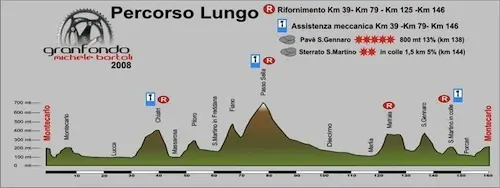 altgranfondo2008big.webp20.4 KB · Views: 645
altgranfondo2008big.webp20.4 KB · Views: 645 -
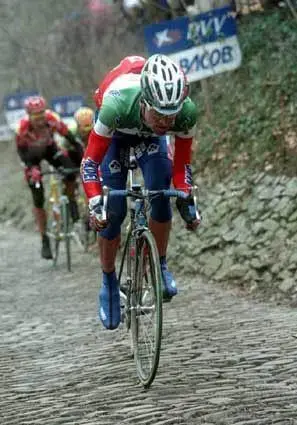 bartoli het volk 2001.webp23.9 KB · Views: 645
bartoli het volk 2001.webp23.9 KB · Views: 645 -
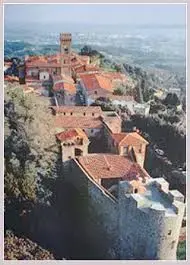 Montecarlo.webp9.9 KB · Views: 645
Montecarlo.webp9.9 KB · Views: 645 -
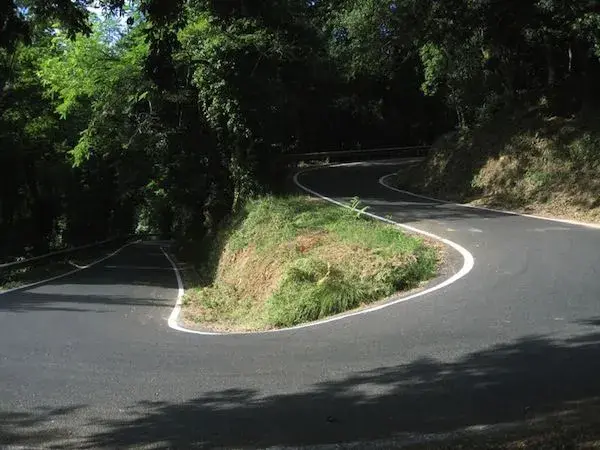 BartoliClimb.webp43.4 KB · Views: 645
BartoliClimb.webp43.4 KB · Views: 645 -
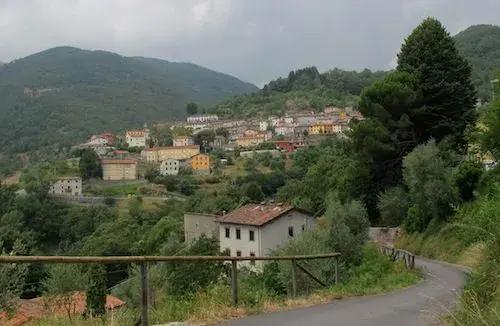 Pescaglia_(il_poggio)_veduta.webp26.3 KB · Views: 645
Pescaglia_(il_poggio)_veduta.webp26.3 KB · Views: 645 -
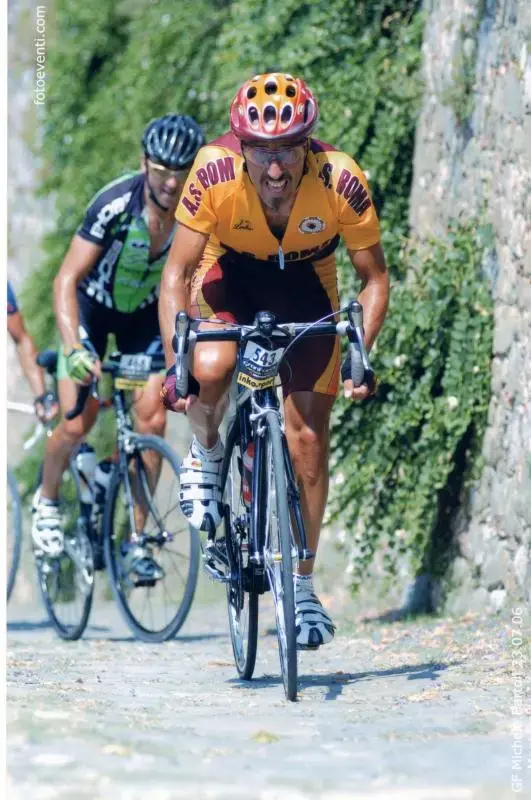 user8284_pic25949_1292278633.webp54.7 KB · Views: 645
user8284_pic25949_1292278633.webp54.7 KB · Views: 645 -
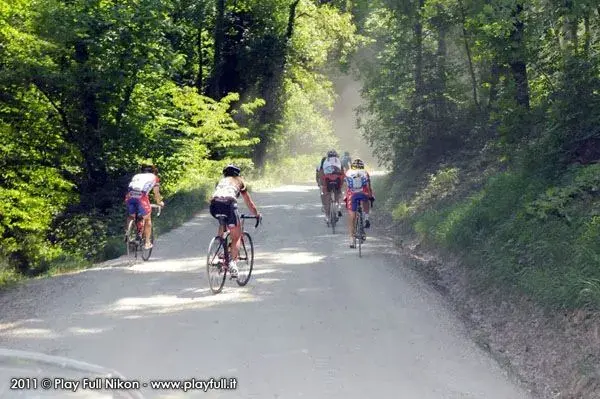 11bartoli_0648_t.webp55.7 KB · Views: 645
11bartoli_0648_t.webp55.7 KB · Views: 645